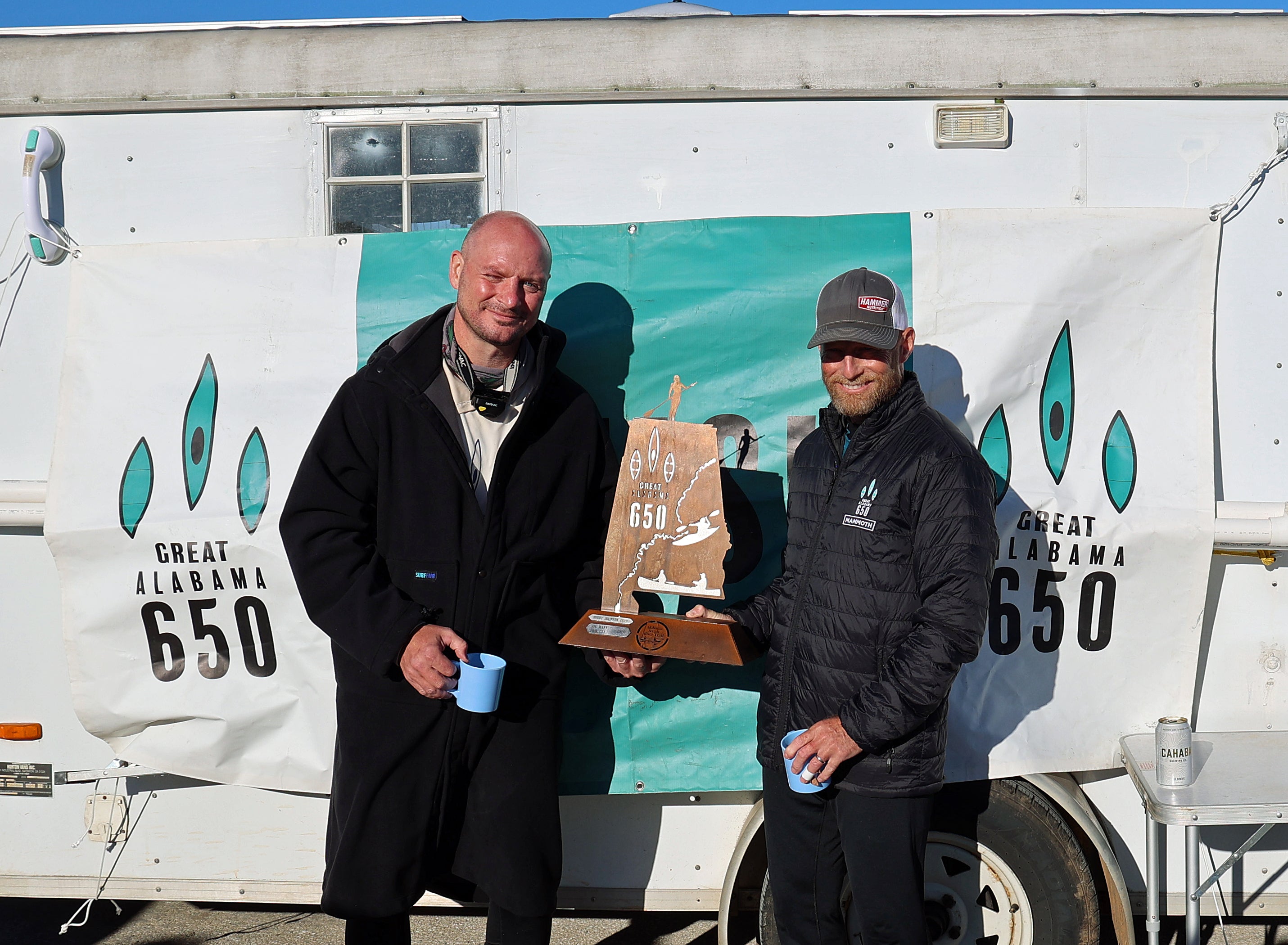By DAVID RAINER, Alabama Department of Conservation and Natural Resources
With almost perfect weather and water conditions, Paul Cox and Joe Mann shattered the record for the Great Alabama 650 (AL650) paddling race that traversed Alabama from Weiss Lake in the northeast corner of the state to Fort Morgan on the state’s beautiful Gulf Coast.
Cox and Mann won last year’s AL650 in 5 days, 22 hours and 8 minutes. The team covered the 650 miles this year in 4 days, 17 hours and 2 minutes. Runners-up Rod Price and Bobby Johnson finished in 4 days, 22 hours and 25 minutes. The top female and solo paddler was Salli O’Donnell, who finished in 4 days, 22 hours and 39 minutes.
The AL650 started in 2019 as a way to showcase Alabama’s abundant waterways and diversity, according to Laura Gaddy, Communications Director with the Alabama Scenic River Trail.
“We wanted a way to highlight how valuable our waterways are for recreation,” Gaddy said. “We thought, what better way to demonstrate that than to invite the world’s best racers to compete on this course.
“They said the AL650 is one of the toughest courses in the world. They say it’s a paddler’s race.”
One reason the paddlers deem the AL650 one of the toughest courses is they have to portage around nine dams on the Coosa and Alabama rivers. Once they get to the Mobile River, the portages are finished, but then they must deal with the unpredictable conditions on Mobile Bay.
“We are accomplishing the goal we had when we started the race,” Gaddy said. “People are becoming more aware how valuable our waterways are. This competition is known internationally among elite paddlers. They put it on their bucket list of events. We think as people recognize our water is so good that elite paddlers are willing to travel across the globe that everybody, even Alabamians, will recognize how unique our resources are.”
The number of entries into the AL650 is capped at 20 to be able to staff the route.
“We want to manage the race in a way that is responsible,” Gaddy said. “Organizing and managing the race is a feat unto itself. We have to have staff at each one of the nine portages.”
Even though the winning team set a new standard for the race, Cox, who lives in Atlanta, said it was not easy.
“It’s extremely hard,” Cox said. “The thing I like about the AL650 is you have so many types of water conditions. You start in the lakes in northern Alabama and then you get to Wetumpka and get a little whitewater in. The lakes can be very difficult because of all the recreational boating traffic. But this year, I’m guessing because of the overcast and rainy weather, there weren’t many recreational boats on the water. We didn’t have to contend with boat wakes much, which made it better.”
Unlike other races, the AL650 has no sleep requirement, which means that sleep deprivation is another hurdle for some of the paddlers.
Cox estimated their sleep consisted of an hour at Wetumpka, two hours at Selma, two hours before they entered Mobile Bay and then a final two hours about two-thirds of the way to Fort Morgan.
“That’s what you have to do to be fast,” Cox said. “Sometimes you have to fight off the sleep monsters. There were definitely moments when I wasn’t paddling well. I was trying to stay upright, splashing myself with water. You have to talk to each other and tell stories. My partner, Joe, is a great storyteller, but he finally told me no more stories. That’s when I knew we needed to pull over and get some sleep.”
Although the rapids at Wetumpka broke up the routine for the paddlers, Cox especially appreciated Mitchell Lake.
“I think the Mitchell Lake section was probably my favorite of the whole race,” he said. “It’s just so beautiful. You have the rock formations that jut out from the eastern side of the lake.
“Then you get to Wetumpka and get a little taste of whitewater. Then you get into the Alabama River, and it gets to be a wider, slower river. But there was obviously a lot of rain this year, so the rivers were moving faster this year. That contributed to the faster pace.”








